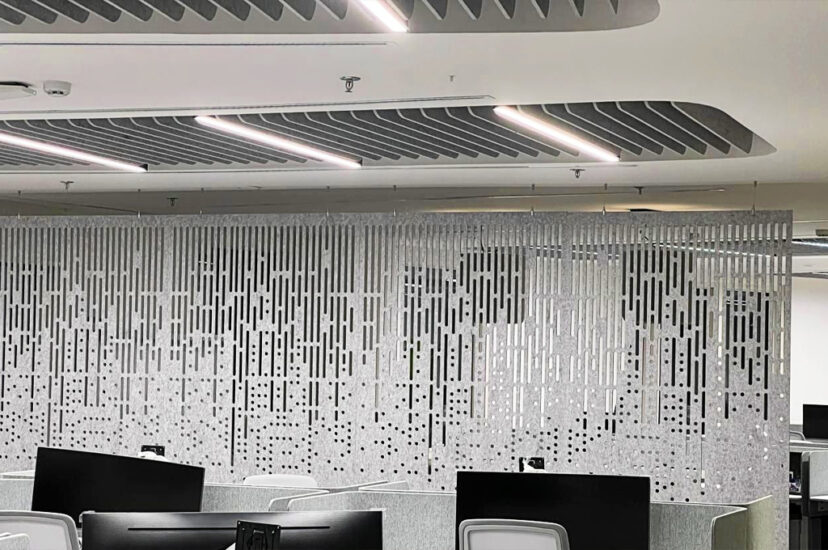In today’s fast-paced business world, creating a productive and pleasant work environment is crucial. One often-overlooked element that can significantly impact office productivity and comfort is acoustics. Office acoustic panels have emerged as a popular solution to manage sound quality and reduce noise-related distractions. This comprehensive guide explores the benefits, types, and installation of office acoustic panels, offering insights into how they can transform your workspace.
What Are Office Acoustic Panels?
Office acoustic panels are specialized materials designed to absorb sound, reduce noise levels, and enhance overall sound quality within a workspace. They come in various shapes, sizes, and materials, tailored to meet the specific acoustic needs of different office environments. The primary goal of these panels is to minimize reverberation and echo, creating a quieter and more focused work atmosphere.
Benefits of Office Acoustic Panels
- Improved Speech Clarity: In open-plan offices, background noise can make conversations difficult to hear. Acoustic panels help in reducing noise levels, making verbal communication clearer and more effective.
- Enhanced Focus and Productivity: Excessive noise can be a significant distraction, impacting concentration and productivity. By controlling noise levels, acoustic panels create a more conducive environment for focused work.
- Reduced Stress Levels: Constant noise can contribute to stress and fatigue. A quieter office environment can lead to lower stress levels and improved overall well-being among employees.
- Privacy and Confidentiality: In offices where sensitive information is discussed, acoustic panels help to prevent eavesdropping and maintain confidentiality by controlling sound transmission between workstations.
- Aesthetic Appeal: Modern acoustic panels come in a variety of designs and colors, allowing them to blend seamlessly with office décor while serving a functional purpose.
Types of Office Acoustic Panels
- Wall Panels: These are mounted on walls to absorb sound and reduce reflections. They are available in various materials, including fabric-wrapped fiberglass, foam, and acoustic wood panels. Wall panels can be strategically placed to target specific areas with high noise levels.
- Ceiling Panels: Installed on or suspended from the ceiling, these panels help in controlling sound reverberation from above. Ceiling panels are particularly effective in high-ceiling spaces where sound tends to bounce.
- Hanging Panels: Suspended from the ceiling or mounted on vertical surfaces, hanging acoustic panels provide flexibility in placement. They are ideal for large open spaces and can be arranged to create a visually appealing design while enhancing acoustics.
- Baffles: These are vertical panels or hanging elements that help manage sound in large open areas. Baffles are effective in controlling noise in spaces with high ceilings and large volumes.
- Desktop Dividers: Designed to fit on workstations, desktop dividers provide personal acoustic privacy and help reduce noise in individual work areas.
Installation and Placement of Office Acoustic Panels
- Assess Your Space: Before installing acoustic panels, evaluate the layout of your office and identify areas with high noise levels or sound reverberation. Consider factors such as room size, ceiling height, and the location of workstations.
- Choose the Right Panels: Select acoustic panels based on the specific needs of your office. Wall panels are ideal for reducing noise in smaller areas, while ceiling and hanging panels are suited for larger spaces.
- Strategic Placement: Place acoustic panels in areas where sound reflections are most problematic. For wall panels, focus on areas opposite reflective surfaces like glass or large hard surfaces. For ceiling panels, ensure even coverage to address sound issues from above.
- Professional Installation: While some panels can be installed by office staff, it is often advisable to hire a professional to ensure proper placement and maximum effectiveness. Professional installers can also provide valuable advice on panel selection and placement.
- Maintenance: Acoustic panels generally require minimal maintenance. However, regular cleaning and checking for any damage are essential to maintain their performance and appearance.
Read also this article: How Our House Washing Service in Hamilton Transforms Your Home
Conclusion
Office acoustic panels are a crucial component in designing a productive and comfortable work environment. By understanding their benefits, types, and installation methods, you can make informed decisions to improve your office’s acoustic quality. Investing in the right acoustic solutions not only enhances employee satisfaction but also boosts overall productivity. As businesses continue to recognize the importance of a well-designed workspace, acoustic panels are becoming an essential feature in modern office design.


